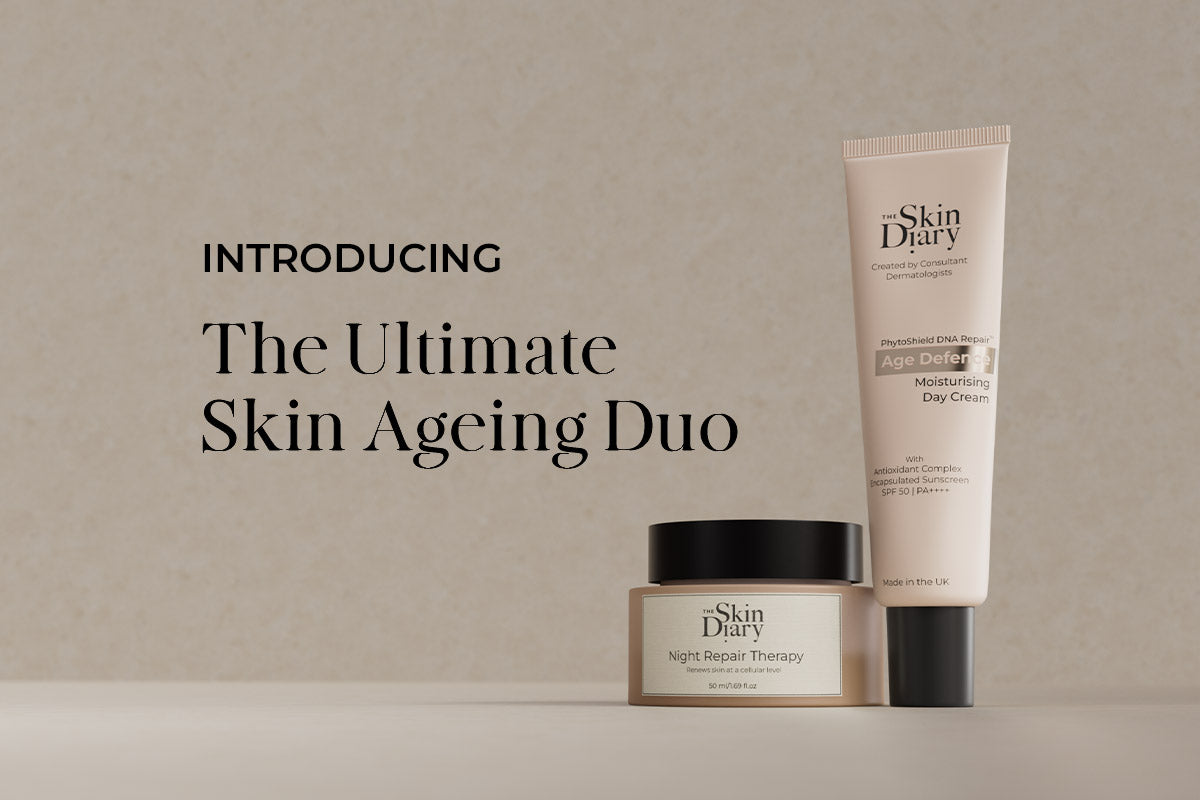You’ll probably hear us talking about being a ‘consultant dermatologist-founded brand’ a lot. It’s something we’re really proud of at The Skin Diary, and consider an incredibly important aspect of the company. And if you’re unfamiliar with the world of dermatologists, you might be wondering why. To get clued-up on all things dermatologist titles, we’ve broken down exactly what a consultant dermatologist is and how it differs from a dermatologist.
What is a consultant dermatologist?
A consultant dermatologist is a medical professional who is highly skilled, specialising in diagnosing and treating skin, hair and nail conditions.
A consultant dermatologist sees patients in-clinic with a wide variety of concerns and queries. Conditions they treat include, skin cancer, psoriasis, acne, eczema, fungal infections, birthmarks and rashes. Plus, so many more that you’ve probably never heard of. Consultant dermatologists also perform surgeries, such as Mohs surgery, a minimally invasive procedure to remove skin cancer.
You might think they only focus on the skin but they also help with hair loss concerns and also nail conditions like onychocryptosis and psoriatic nails.
Some of them also have additional training in aesthetic procedures, such as anti-wrinkles injections (like Botox), fillers and types of laser treatments (and much more). These serve as more cosmetic treatments, however, they can serve as part of medical treatments in some cases.
To become a consultant dermatologist, they have to go through at least 13 years of training. The years and specific requirements differ for the UK, Ireland and overseas but this gives you a general idea of how well trained they are.
After going through medical school, they must complete 4 years of dermatology training (if they get in, dermatology is an incredibly competitive specialty). Once completed and all requirements are met, they are assessed and given a Certificate of Completion of Training (CCT) in Dermatology. This allows an individual to enter the Specialist Register of the General Medical Council (GMC) as a consultant dermatologist. Many consultant dermatologists go on to do more training, known as fellowships, expanding their knowledge even further in particular topics like skin cancer.
Consultant dermatologists work both in the NHS or in private practice; many opting for a mix of both.
The Skin Diary’s co-founder Dr. Clare Kiely’s steps to become a consultant dermatologist

Medical school: 6 years
Internship: 1 year
Senior house officer in medicine: 2 years with MRCPI exams
Registrar posts in medicine and dermatology: 2 years
Specialty Training in Dermatology: 5 years (CST completion of specialty training and entry on specialty Register of GMC). Alongside a Masters in skin ageing: 3 years.
Fellowship training skin cancer: 1 year
Fellowship training surgery and laser: 1 year
To become a consultant dermatologist.
What’s the difference between a consultant dermatologist and dermatologist?
The biggest difference between a ‘dermatologist’ and a ‘consultant dermatologist’ is that a consultant dermatologist has had extensive training and the title is protected, meaning you can only use it if you have the qualifications. A dermatologist, on the other hand, is an unprotected term meaning anyone can (and does) use it.
While a dermatologist is medically trained, they haven’t had the same specialist training that a consultant has. You might hear the terms cosmetic dermatologist, aesthetic dermatologist and aesthetic doctor. These are all medically trained but not as a consultant dermatologist with the 4 years of specialty training.
It’s important to note that not everyone who says they’re an ‘aesthetics practitioner’ has training. Because the UK has an unregulated injectables industry, people who have no medical training can carry out these treatments. It’s incredibly important to visit someone who has relevant medical training to give you the best result and ensure your safety during and post-procedure.
Consultant dermatologists diagnose and treat conditions that you’ve probably never even heard of on a daily basis, which is why it’s so important to seek medical advice from the experts at the top of their field to avoid misdiagnosis.

At The Skin Diary, we’re lucky to have four consultant dermatologists on the founding team — Dr. Clare Kiely, Professor Chris Griffiths, Dr. Tamara Griffiths and Dr. Richard Barlow — who are top of their fields creating science-backed skincare with you in mind.
Plus, we work with other top doctors — such as Dr. Beibei Du-Harpur, a dermatologist and clinical lecturer — to help bring you the best-of-the-best in education so that you’re informed and get the results you deserve.
Consultant Dermatologist FAQs
How much does a consultant dermatologist appointment cost? This varies dramatically depending on who you’re seeing, your location and your treatment but the average cost in the UK is between £150 and £300. Think of it as an investment in your health and money saved from buying unnecessary skincare products that aren’t going to solve your problem.
Can you get a dermatology appointment on the NHS? Some consultant dermatologist appointments are free on the NHS if your GP thinks your condition is medical and needs to be assessed. This is done on a case by case basis. If your GP suspects you have skin cancer, you will be fast tracked to a specialist who will review your case.
How do I know I’m seeing a consultant dermatologist? Before booking your appointment, you can check that you’re seeing a consultant dermatologist who has all of the relevant training listed above by visiting the GMC register and searching for their name.
What do I need for my consultant dermatology appointment? This depends on what you’re going for, but it’s always helpful to come with a list of medications you’re taking, any medical conditions, treatments you’ve tried and a photograph of your current skincare routine. This helps maximise time during your appointment (it’s easy to forget details so coming prepared helps avoid this) and get a treatment plan you’re happy with sorted.





